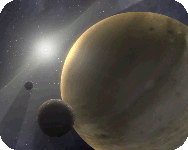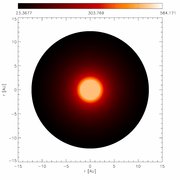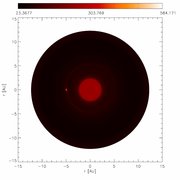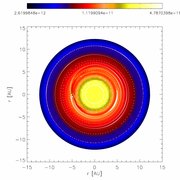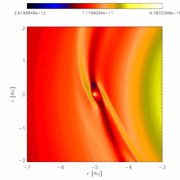Particle accretion onto giant gas planets
Contact: N. Raettig
Giant gas planets once started out as small rocky cores, which then accreted more and more gas but also solid material and thus reached their high masses. Here we now focus on the dust accretion to find out whether those planets can be enriched in solids compared to the normal solar metallicity. For this two separate simulations are done. One hydrodynamic simulation for the gas, which is based on a non-isothermal equation of gas, including radiation transport and heating by the planet. And a restricted three-body simulation to model the motion and accretion of individual particles.
As a result we see that a significant fraction, 33%, of all present solid material with a Stokes-number of 1 are accreted onto a 30 Earth mass planet. Whereas larger and smaller particles are prevented from accretion due to mean-motion resonances or the disk gas-structure. Using an isothermal equation of state for the gas disk leads to no accretion at all.
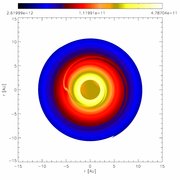
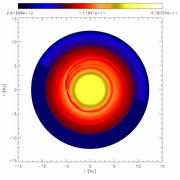 Logarithmic density (upper row) and temperature (lower row) of a gas disk with a 30 Earth mass planet located at (0AU, -5AU) for an isothermal (left) and a non-isothermal (right) equation of state.
Logarithmic density (upper row) and temperature (lower row) of a gas disk with a 30 Earth mass planet located at (0AU, -5AU) for an isothermal (left) and a non-isothermal (right) equation of state.

